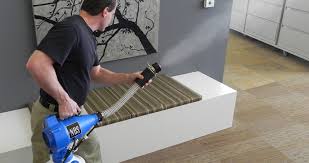Odours, those unwelcome guests in our homes, cars, and workplaces, have the power to disrupt our daily lives. From lingering pet accidents to stubborn cigarette smoke, these unpleasant smells can be a source of frustration and embarrassment. But fear not, for this guide equips you with the knowledge and tools to banish odours effectively.
Understanding the Science of Smell
Before we dive into odour removal strategies, let’s delve into the science behind these olfactory offenders. Odours are caused by volatile organic compounds (VOCs), tiny gas molecules released by various sources. These VOCs waft through the air and tickle olfactory receptors in our noses, triggering the sensation of smell.
The type of VOC determines the specific odour we perceive. For instance, the pungent aroma of rotten eggs arises from hydrogen sulfide, while the sweet scent of vanilla is due to vanillin.
Identifying the Odour Source: Crucial First Step
The key to successful odour removal lies in pinpointing the source. Here are some common culprits:
- Biological Odours: Caused by bacteria or mould growth, these odours often emanate from spills, pet accidents, or damp environments.
- Food Odours: Cooking, decaying food scraps, and spills contribute to lingering food smells.
- Smoke Odours: Cigarette smoke, burnt fabrics, or fire damage leave behind a distinct and persistent odour.
- Chemical Odours: Cleaning products, paints, and off-gasing furniture can introduce chemical odours.
Once you’ve identified the source, you can choose the most appropriate odour removal method.
Odour Removal Strategies: A Multi-Pronged Approach
There’s no one-size-fits-all solution for odour removal. Here’s a breakdown of effective strategies based on the type of odour:
- Neutralization:
- Baking Soda: A natural deodorizer, baking soda absorbs and neutralizes acidic odours like vomit or pet accidents. Sprinkle it on carpets, upholstery, or litter boxes, leave it for several hours, and then vacuum.
- Vinegar: Diluted white vinegar neutralizes alkaline odours like fish or urine. Spray the affected area, let it sit for 15 minutes, and then wipe clean.
- Coffee Grounds: Freshly ground coffee beans absorb odours like garlic, onions, and smoke. Place bowls of grounds in smelly areas or leave them in the refrigerator to combat lingering food smells.
- Absorption:
- Activated Carbon: This highly porous material traps odour molecules within its structure. It’s commonly found in air purifiers and odour eliminators for cars and refrigerators.
- Baking Soda (Again): Besides neutralization, baking soda also absorbs odours.
- Oxidation:
- Hydrogen Peroxide: A mild oxidizer, hydrogen peroxide breaks down odour-causing molecules. It’s effective against biological odours but can bleach some fabrics, so test it in an inconspicuous area first.
- Ozone Generators: These devices produce ozone (O3), a powerful oxidizer that destroys odours, particularly smoke and pet accidents. However, ozone can irritate lungs, so proper ventilation is crucial during and after use. Use caution and follow manufacturer’s instructions.
- Enzymatic Cleaning:
- Enzymatic Cleaners: These cleaners contain enzymes that break down organic matter, the source of food and pet odours. They’re particularly effective on carpets, upholstery, and pet bedding.
- Ventilation:
- Fresh Air is Key: Proper ventilation is essential for removing odours. Open windows and doors to allow fresh air to circulate and carry away odours.
- Addressing the Source:
- Cleaning and Sanitation: For persistent odours, thorough cleaning and sanitation are crucial. Eliminate the source of the odour, such as spills, mould growth, or decaying food.
- Odour Masking:
- Air Fresheners: While not a permanent solution, air fresheners can mask unpleasant odours with pleasant scents. Opt for natural air fresheners like essential oils or simmering bowls of citrus peels and cloves.
- Professional Odour Removal:
- For Tough Cases: For severe odours like smoke damage or pet accidents that have permeated walls or furniture, professional odour removal services might be necessary. They employ specialized techniques and equipment for deep odour removal.
Odour Removal for Specific Situations:
Cars: Sprinkle baking soda on carpets and upholstery, leave it overnight, and then vacuum. Hang bowls of activated carbon or coffee grounds to absorb odours. Leave windows open to air out the car.
Homes: Address the source of the odour first. Clean spills, eliminate mould growth, and dispose of decaying food waste. Utilize baking soda, vinegar, or enzymatic cleaners for specific odours. Open windows and doors for ventilation.
Conquering the Stench: A Comprehensive Guide to Odour Removal
Following up on our exploration of odour removal strategies, let’s delve deeper into specific situations and tackle those stubborn smells:
Odour Removal for Fabrics:
- Pre-treat Stains: Before tackling the odour, pre-treat any visible stains with an appropriate stain remover. This prevents odours from setting deeper into the fabric.
- Washing: Wash fabrics according to the care label instructions using hot water (if safe for the fabric) and an odour-eliminating laundry detergent. Adding baking soda to the wash cycle can provide extra odour-fighting power.
- Air Drying: Whenever possible, air-dry fabrics outdoors or in a well-ventilated area. Sunlight can help kill odour-causing bacteria and freshen the fabric. Avoid drying smelly clothes in a dryer, as the heat might set the odour.
For Delicate Fabrics:
- Spot Cleaning: For delicate fabrics that can’t be washed, try spot cleaning with a solution of white vinegar and water or an enzymatic cleaner. Test the cleaning solution on an inconspicuous area first.
For Leather:
- Leather Conditioner: Clean leather with a leather cleaner and conditioner specifically formulated for the type of leather. Avoid using harsh chemicals or water, as they can damage the leather.
Odour Removal for Kitchens and Bathrooms:
Kitchens:
- Clean the Garbage Disposal: Grind up citrus peels or ice cubes with lemon juice to freshen the garbage disposal.
- Microwave Lemon Slices: Heat lemon slices in the microwave for a few minutes to neutralize food odours.
- Boil Vinegar: Simmer a pot of white vinegar on the stovetop to combat lingering food smells.
- Clean Drains: Regularly clean drains to prevent food particles from accumulating and causing odours.
Bathrooms:
- Clean Drains and Toilets: Use a drain cleaner and disinfect toilets regularly to prevent odours from rising.
- Baking Soda and Vinegar: Sprinkle baking soda around the toilet bowl and under the rim, then add vinegar to create a fizzing reaction that helps deodorize.
- Shower Curtains: Wash shower curtains regularly with hot water and a mild detergent to prevent mould growth and mildew odours.
- Ventilation: Ensure proper ventilation by running the exhaust fan during and after showers to reduce moisture and prevent mould growth.
Odour Removal for Pets:
- Accidents: Clean up pet accidents immediately with an enzymatic cleaner specifically designed for pet odours. These cleaners contain enzymes that break down organic matter, eliminating the source of the odour.
- Pet Bedding: Wash pet bedding regularly in hot water with an odour-eliminating laundry detergent. Sunlight can help kill bacteria and freshen the bedding, so consider drying it outdoors whenever possible.
- Carpets and Upholstery: Treat pet accidents promptly and utilize enzymatic cleaners for deep odour removal. Baking soda can also be sprinkled on carpets, left for a few hours, and then vacuumed to absorb lingering pet odours.
- Regular Cleaning: Regularly vacuum carpets, upholstery, and furniture to remove pet hair and dander, which can trap odours.
Odour Prevention: A Proactive Approach
Preventing odours is far easier than eliminating them. Here are some proactive measures you can take:
- Maintain Cleanliness: Regular cleaning and sanitation are essential for preventing odours. Promptly clean spills, dispose of garbage regularly, and address mould growth as soon as it appears.
- Control Moisture: Moisture is a breeding ground for bacteria and mould, which contribute to odours. Use exhaust fans in kitchens and bathrooms, ensure proper ventilation throughout your home, and address any leaks or moisture problems promptly.
- Store Food Properly: Store food in airtight containers in the refrigerator or pantry to prevent odours from spreading. Dispose of expired or rotten food immediately.
- Empty Trash Regularly: Don’t let trash accumulate. Empty garbage bins regularly to prevent odours from overflowing.
- Use Air Purifiers: Air purifiers with HEPA filters can help remove odour-causing particles from the air. Opt for air purifiers with activated carbon filters for added odour absorption.
- Natural Odour Neutralizers: Place bowls of baking soda, activated carbon, or coffee grounds in smelly areas to absorb odours naturally.
By understanding the science of odours, employing the right removal strategies, and implementing preventative measures, you can create a fresh and odour-free environment in your home, car, or workplace. Remember, a clean and odour-free space contributes to a healthier and more pleasant living environment.















